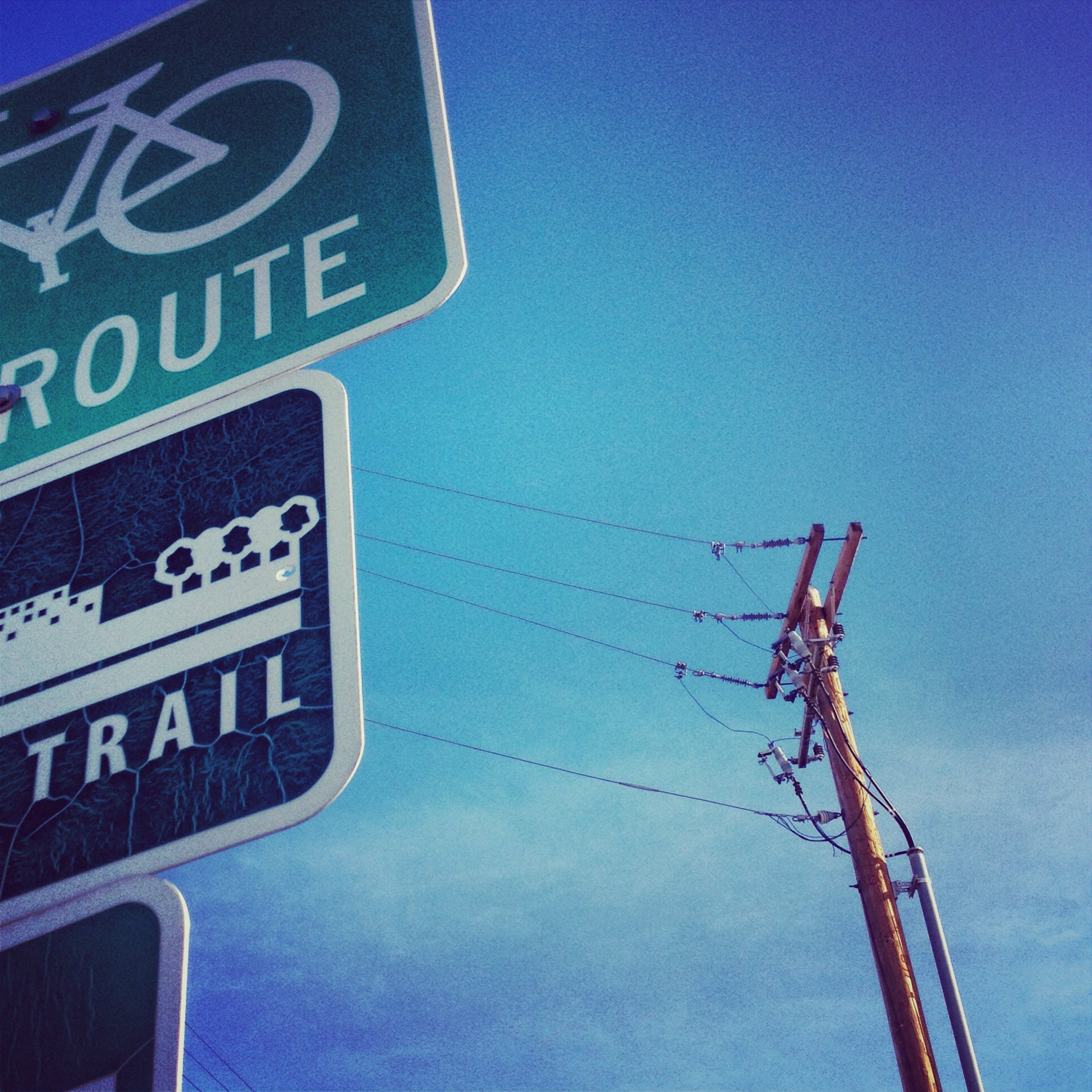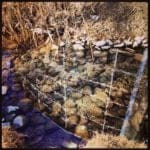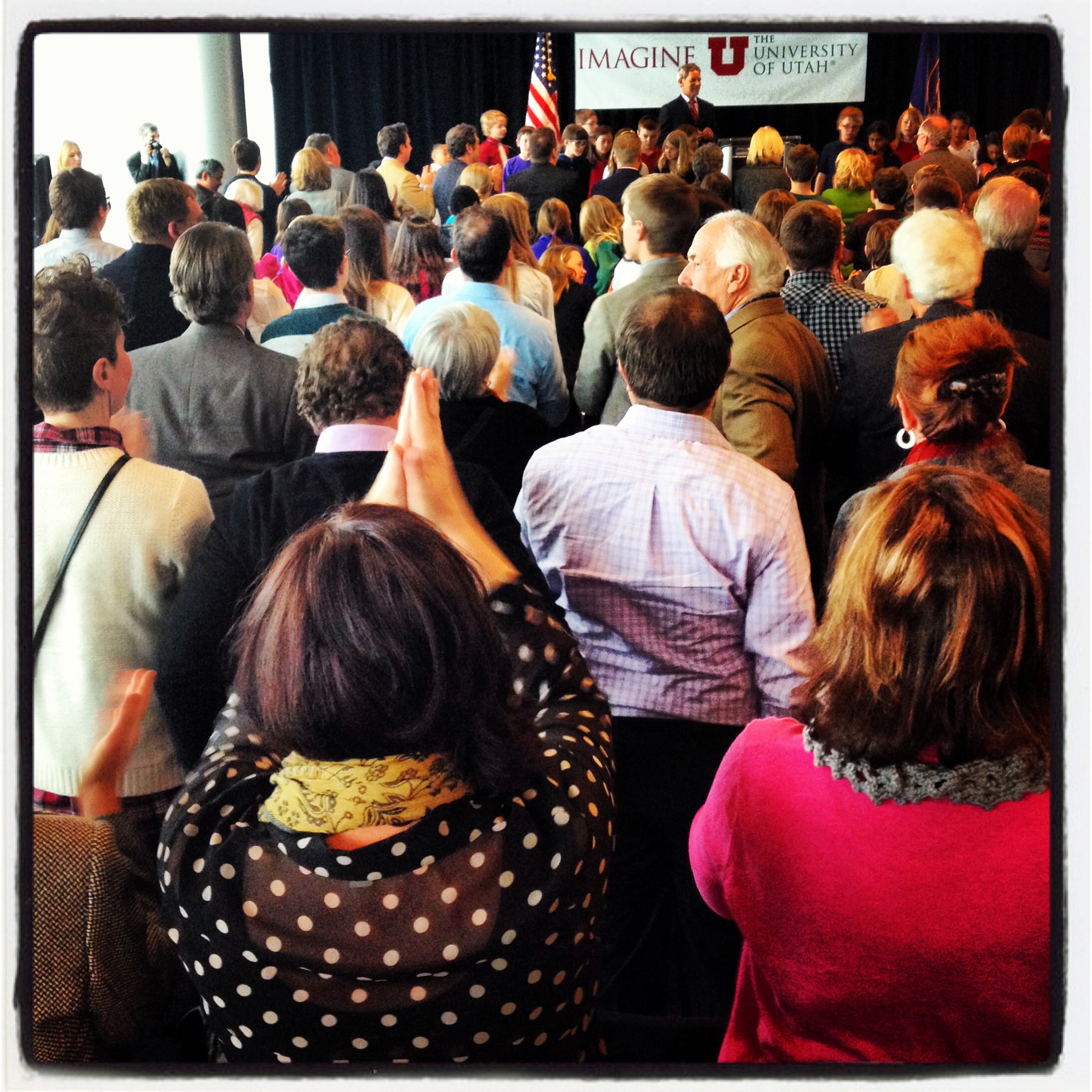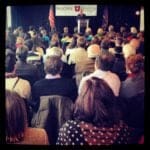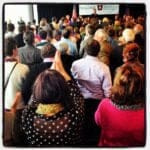-

-
A packed house of roughly 300 people attended the 2014 State of the City Address.
-

-
Mayor Ralph Becker addresses the crowd of Salt Lake City residents, students and stakeholders.
-

-
A standing ovation for Mayor Becker and the 4th grade ELP students from Whittier Elementary!
On Wednesday, January 8, Mayor Ralph Becker gathered with residents, students and stakeholders to deliver his 2014 State of the City Address.
But instead of following tradition and sharing the administration’s accomplishments, Mayor Becker focused his entire speech on air quality.
The Mayor began by focusing on what Salt Lake City has already accomplished to reduce emissions and help clear the air. Efforts include the City’s Idle Free Ordinance, bike share, electric vehicle charging stations, biking infrastructure and the new net zero Public Safety Building. Read the full summary.
Then he outlined Salt Lake City’s next steps on air quality issues, including discount transit pass for city residents, creating an incentive program to replace woodburning stoves and phasing out inefficient maintenance equipment like 2 stroke engines. Read the full summary.
In some of the most compelling moments of the address, Mayor Becker outlined five clear requests for state government. These requests specifically deal with limitations that local governments face when combating air pollution. Part of the plea included the message “If this can’t be accomplished at the state level, let us. We at the local level can get it done.”
- Allocate more money for public transit. “We have to make it easier for people to use transit as an alternative to driving. We need more coverage that runs more frequently and costs less. Recent polling and many anecdotes I hear reinforce how difficult it is for most people to use transit. It just takes too long and is too inconvenient. And the only way to improve transit service is to better fund it. I urge our State to raise the cap on sales tax for transit. It should be a no-brainer. Or, if you are unwilling to do so, let us do it. Give us local control to fund transit. We at the local level can get it done.”
- Make lower sulphur gasoline available. “Tier 3 gasoline, as it is called, has lower levels of sulphur and therefore decreased emissions. It is mandated in other states and should be required for use along the Wasatch Front. This technology exists today to significantly reduce tailpipe emissions. Interestingly, one of our local refineries, Chevron, already produces Tier 3 gasoline, but it is shipped to Washington State because it’s is required there. Even our Salt Lake County Council of Governments endorsed the shift to Tier 3. Or, once again, if you are not willing to do that, let us make that determination locally.”
- Change state law to allow for standards that are relevant to Utah. “Do you all know that we have a state law that says our air quality standards here in Utah cannot be more strict than federal standards? Are we really okay with a standard that represents a passing grade for most other cities and states, but still allows us to fail? Since when are we content with Federal officials in Washington determining what’s best for the people of Utah? If this can’t be accomplished at the state level, give us local control over air quality standards so we can make them fit our local needs.”
- Make the true cost of driving transparent at the pump. “Gas prices directly affect whether people drive their cars more or less. According to a recent statewide survey, about half of Utahns would reduce vehicle use if gas cost an additional 25 to 75 cents per gallon. And, at an additional $1 per gallon, nearly two thirds would reduce their vehicle use and find other ways to run errands, get to work, and live their lives. If this can’t be accomplished at the state level, let us. We at the local level can get it done, and in fact local governments are united around a proposal for a local option gas tax increase.
- Require buildings to use power efficiently. Utah’s energy code standards date back to 2006. Since then, national and international building codes have been upgraded and have been proven to achieve a 30% improvement in energy efficiency. Many other jurisdictions across America have done this already. If state entities cannot or will not, let us do it. We can get it done locally.”
The event closed with the 4th grade ELP students from Whittier Elementary singing an original song called “The Frightful Inversion.” Watch the video below!
Additional Resources
Read a full transcript of the 2014 State of the City Address.
View images on SLCgreen Instagram.
Join the conversation! Use the #clearupslc hashtag on Twitter and Instagram.

